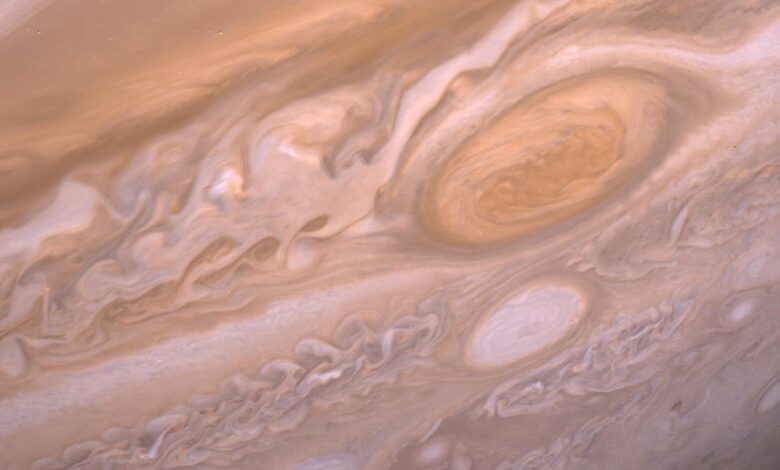Jupiter was once twice as large as it is today

Jupiter, the largest planet in our solar system, is a fascinating celestial body that continues to intrigue astronomers with its sheer size and magnetic field. Recent calculations based on the orbits of Jupiter’s smallest moons suggest that the gas giant was once more than double its current size, with a magnetic field 50 times stronger. These findings, detailed in a study published in the journal Nature Astronomy, shed light on Jupiter’s early history and its impact on the formation of our solar system.
Researchers focused on two of Jupiter’s tiniest moons, Almathea and Thebe, to understand the planet’s primordial stages. By analyzing the dynamics of these moons’ orbits and considering the conservation of angular momentum, they estimated Jupiter’s size and magnetic field strength around 3.8 million years after the solar system formed. This period marked the time when the planets were beginning to take shape from the protoplanetary nebula surrounding the sun.
The study’s co-author, Fred Adams, a professor of physics and astronomy at the University of Michigan, expressed amazement at the ability to reconstruct Jupiter’s early physical state after billions of years. By focusing on direct measurements from Jupiter’s moons and the conservation of angular momentum, the researchers were able to avoid common uncertainties in planetary formation models.
The new calculations not only enhance our understanding of Jupiter but also provide insights into the evolution of other giant planets orbiting stars. They suggest that gas giants like Jupiter form through core accretion, where gas rapidly accumulates around a core of ice and rock. Konstantin Batygin, a planetary science professor at Caltech and study co-author, emphasized the importance of understanding the early phases of planet formation in unraveling the mysteries of our solar system’s origins.
Overall, the study offers valuable insights into Jupiter’s past and its role in shaping the solar system. By combining observational data with theoretical models, astronomers are getting closer to unraveling the complex processes that led to the formation of our cosmic neighborhood. As we continue to study Jupiter and other celestial bodies, we gain a deeper understanding of our place in the universe and the forces that have shaped it over billions of years.




